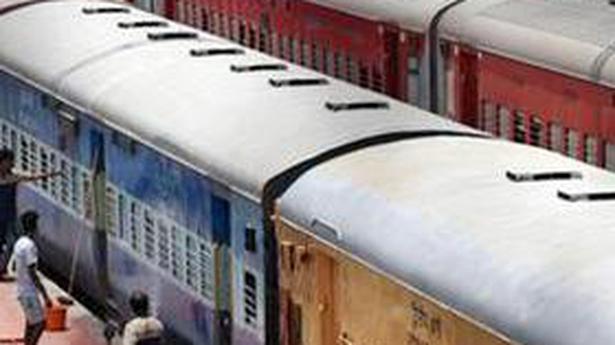
Indian Railways’ new timetable to come into force today
The Hindu
It would be available on the Indian Railways’ official website, and also as an ‘e-Book’, said the Ministry
The Indian Railways’ new timetable called “Trains at a Glance (TAG)” which includes necessary changes to improve punctuality as well as provision for maintenance corridor blocks, will come into force October 1 onwards.
The timetable would be made available on the Indian Railways’ official website, and also as an ‘e-Book’ which could be downloaded from the IRCTC website, the Ministry of Railways said in a statement.
The Indian Railways runs about 3,240 mail/express trains which include Vande Bharat Express, Gatimaan Express, Rajdhani Express, Shatabdi Express, Humsafar Express, Tejas Express, Duronto Express, Antyodaya Express, Garib Rath Express, Sampark Kranti Express, Yuva Express, Uday Express, Janshatabdi Express and other trains.
In addition, about 3,000 passenger trains and 5,660 suburban trains are also operated over the Indian Railways network.
“Necessary changes in the time table have been incorporated to improve punctuality. Due to concerted efforts the punctuality of Mail/Express trains has improved by about 9% as compared to the punctuality during pre Covid (2019-20),” an official statement said.
It added that to provide sufficient time for the maintenance of the fixed infrastructure like track structure, signalling gears and overhead equipments, it has been planned to ensure provision for fixed corridor blocks. “The duration of these corridor blocks will be from three hours in each section. This will not only improve the reliability of the assets but also enhance passenger safety,” it said.













